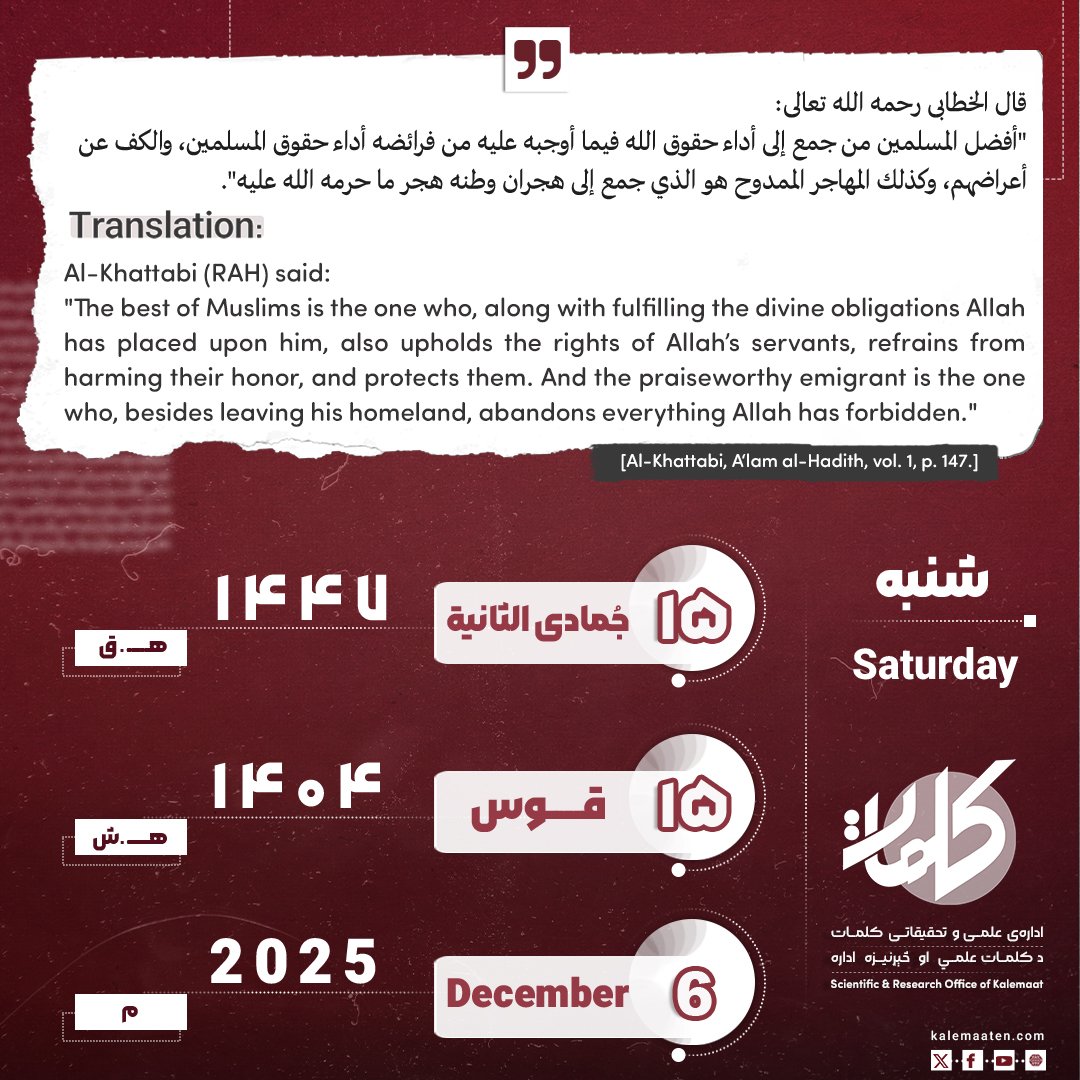
Author: Obaidullah Nimruzi
The Guardian of Al-Andalus (Spain); Sultan Yusuf ibn Tashfin [MABH] (Part 35)
These years were among the darkest and most bitter periods in the history of Andalusia. The root of these crises lay in the corruption of intentions, estrangement from Allah and Islamic teachings, and the death of consciences; neglect of covenants and complete indulgence in frivolity, pleasure-seeking, and idleness opened the way for power-hungry opportunists and profiteers to rise and dominate various regions. As a result, the fire of sedition flared up, disputes over worldly gains intensified, and the bloody competition for leadership plunged Andalusia into darkness.
During this period, rebels and claimants to power multiplied, injustice and killings spread, and everyone sought to claim a larger share of the caliphate’s legacy. Thus, Andalusia became a fragmented body. The author of the book Qala’id al-‘Uqyan describes this situation as follows: “When the throne of the caliphate was overturned and its star declined, the foundation of the imamate weakened and its signs vanished; kingship became a claim and safety turned into affliction. Hawks became crows and dreams turned into reality; the gazelle became a lion in its own ambush; everyone rebelled against their own group, pulpits were left empty of preachers, and Friday prayers remained without guardians of the times. (1)
Four Caliphs in One Land; The Caliphate’s Scandal in Andalusia
Ibn ‘Adhari narrates a remarkable example of this chaos. He writes, quoting Abu Muhammad ibn Hazm: “In Andalusia, there were four caliphs, each delivering sermons in his own region in the name of the caliphate. This unprecedented disgrace foretold perpetual decline. Within a three-day travel distance, four people claimed the caliphate. One of them was in Seville, a man named Khalaf Hasari who claimed to be Hisham al-Mu’ayyad—even twenty-two years after Hisham’s death! Some slaves and women testified that he was indeed Hisham, and the people pledged allegiance to him. Sermons were read in his name in many cities of Andalusia; wars broke out and blood was shed. Meanwhile, Muhammad ibn Qasim al-Hasani on the island, Muhammad ibn Idris in Malaga, and Idris ibn Yahya in Ceuta each called himself caliph.(2)
Collaborating with the Enemy; The Greatest Betrayal to the Ummah
Another tragic point is that the leaders of Andalusia at that time did not limit themselves to internal wars and bloodshed; rather, to strengthen their own power, they resorted to the Christians (Nassara). They paid money and.
They entrusted castles and fortresses to the Christians, hoping for their support to sustain their shaky thrones. In doing so, they forgot how much blood their ancestors had shed and how much effort had been made to defend those fortresses.
As a result, a great catastrophe and general disaster occurred. The united enemy triumphed over a fragmented nation. The author of the History of Andalusia explains: “The most beloved thing to the Christian king (Alfonso) was to sow discord among the Muslim governors; so, he incited one against the other to seize their wealth. He hoped that one day they would fall so that he could dominate the entire island. (3)
A Lesson for Today; West and East as in the Past
This story does not belong solely to past centuries but serves as a mirror for us today. Throughout history, the West and East have exploited the division of Muslims. If two Muslim factions fight each other, the alliance of global powers against them is inevitable, because such conflicts are contrary to the interests of the Islamic Ummah and align with the goals of those powers.
In such cases, their conditions are clear: costs must be prepaid, the resources of the Ummah drained, and the final results shaped so as to weaken, fragment, and further collapse the power of the Islamic Ummah.
This law was the same in the fifth century Hijri as it is today in the fifteenth century Hijri; in Andalusia just as it has been and is in the Islamic East.
Brotherly Division and Trade with the Enemy
In the year 438 AH, Suleiman ibn Hood, the ruler of Saragossa, passed away leaving five sons. Before his death, he had divided his realm among them: Ahmad was appointed over Saragossa, Yusuf was made governor of Larida, and the other sons took independent positions. But Ahmad ibn Suleiman, driven by hidden greed, began scheming against his brothers to seize their territories as well.
At the same time, the region of the city of Tutila was suffering from severe famine and high prices. The people of that area appealed to Yusuf ibn Suleiman, the governor of Larida, for help. Between Larida and Tutila lay a territory controlled by a Christian king named Ibn Rudmir. Yusuf, to save the people of Tutila, reached an agreement with this Christian king allowing food caravans to pass through his land without needing to cross Ahmad’s territory, in return for a payment.
Yusuf, with great determination, equipped a large caravan of horses, camels, warriors, and provisions and sent it on its way; but when Ahmad learned of this, he sent a message to Ibn Rudmir, promising that if he allowed him to plunder the caravan in his territory, he would pay him double the amount Yusuf had paid.
And what could be expected from a Christian king? Ibn Rudmir preferred the temptation of worldly wealth over human commitment and broke his promise, allowing Ahmad to seize the caravan. As soon as the caravan entered his land, Ahmad attacked, killing many, capturing some, while the Christians also took part in the plunder, looting the caravan’s goods. What remained were only a few survivors and a mountain of regret.
As a result of this betrayal, the hands of the Christians were filled with the wealth of the Muslims, and what Yusuf had granted them was lost. Such was the blind and ignorant policy of the Andalusian rulers, who valued neither mercy nor Islamic brotherhood. Meanwhile, the eternal loser was the oppressed Muslim nation, which lost both its wealth and lands as well as its honor and dignity—and the only one who benefited from these conflicts was the lurking enemy.
Continues…
References:
- Al-Fath ibn Khakan, Qala’id al-‘Uqyan, p. 18.
- Ibn ‘Adhari, Al-Bayan al-Maghrib, Vol. 3, p. 244.
- “Ibn al-Kurtubus, History of Andalusia, p. 82.”



